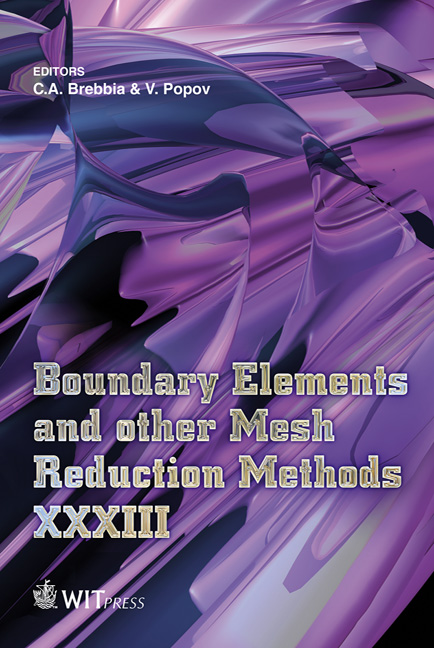Evenly Spaced Data Points And Radial Basis Functions
Price
Free (open access)
Transaction
Volume
52
Pages
8
Page Range
265 - 272
Published
2011
Size
213 kb
Paper DOI
10.2495/BE110231
Copyright
WIT Press
Author(s)
L. T. Luh
Abstract
The purpose of this article is to introduce a kind of data setting to handle radial basis functions. Traditionally the meshless method RBF uses scattered data setting to do interpolations. This approach faces two hard problems. First, the optimal choice of the shape parameters contained in smooth radial functions are not easy to find. Second, the crucial constant ω in the exponential-type error bound, which is O(ω 1 d ), is too large, making this error bound meaningful only when the fill distance d is extremely small. However, in the evenly spaced data setting, an error bound of the form O( √ dω 1 d ) is established where ω is much sharper than that of the former one.What’s important is that whenever this error bound is adopted, the optimal choice of the shape parameter can always be found with the fill distance d of reasonable size. We express the effect of the shape parameter c by explicitly defined functions and present concrete criteria of the optimal choice of c, which do not require too many data points. Keywords: radial basis function, shifted surface spline, shape parameter, interpolation. 1 Introduction This article is intended only to open a window for the topic of choosing the shape parameter optimally. We try to avoid mentioning complicated theory and heavy techniques. Rather, we present concrete criteria of choosing the shape parameter. The smooth RBFs, multiquadric, inverse multiquadric, gaussian, and shifted surface spline, all contain a shape parameter, usually denoted by c. Recently Cheng made a comprehensive study of its choice for MQ, IMQ and GA in Cheng [1], while the choice of c in the shifted surface spline was missing.We therefore focus
Keywords
radial basis function, shifted surface spline, shape parameter, interpolation





